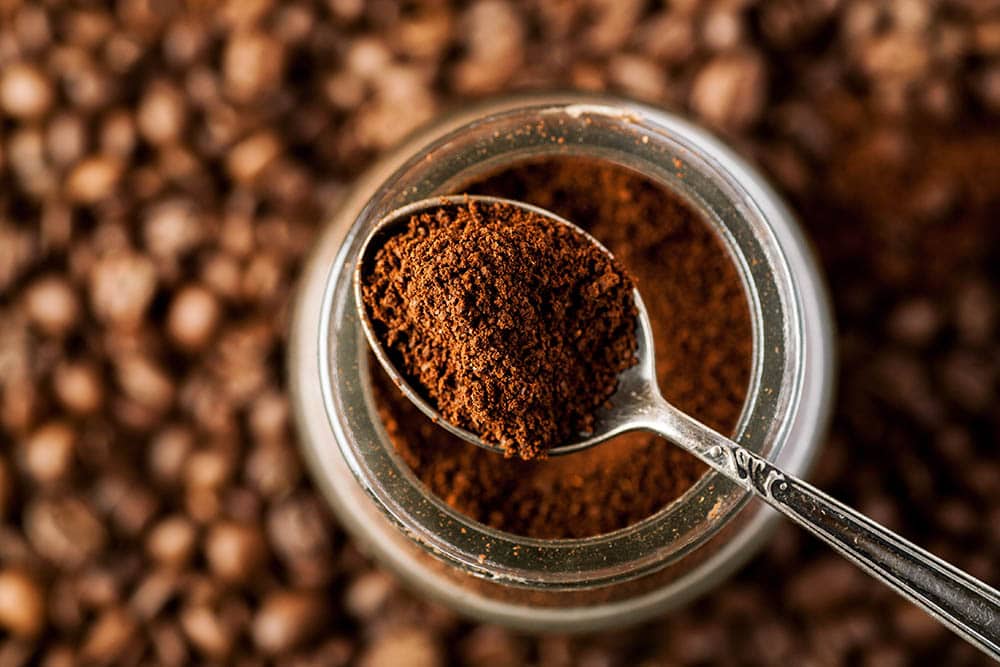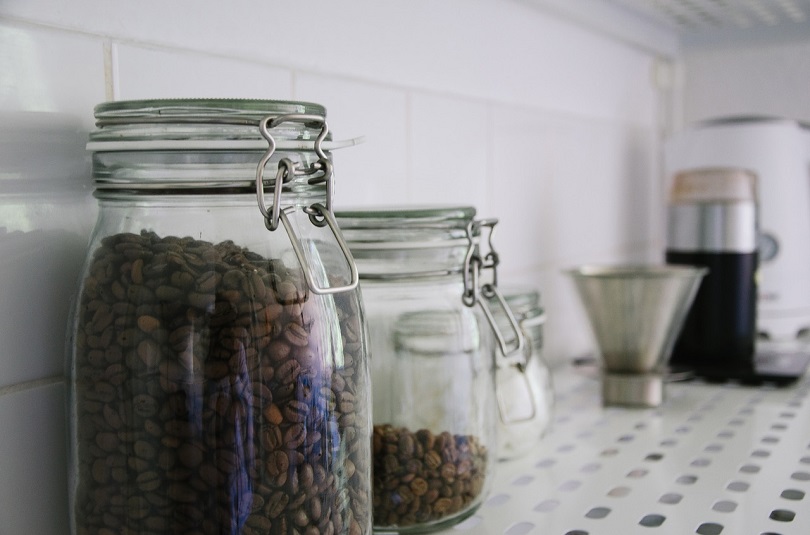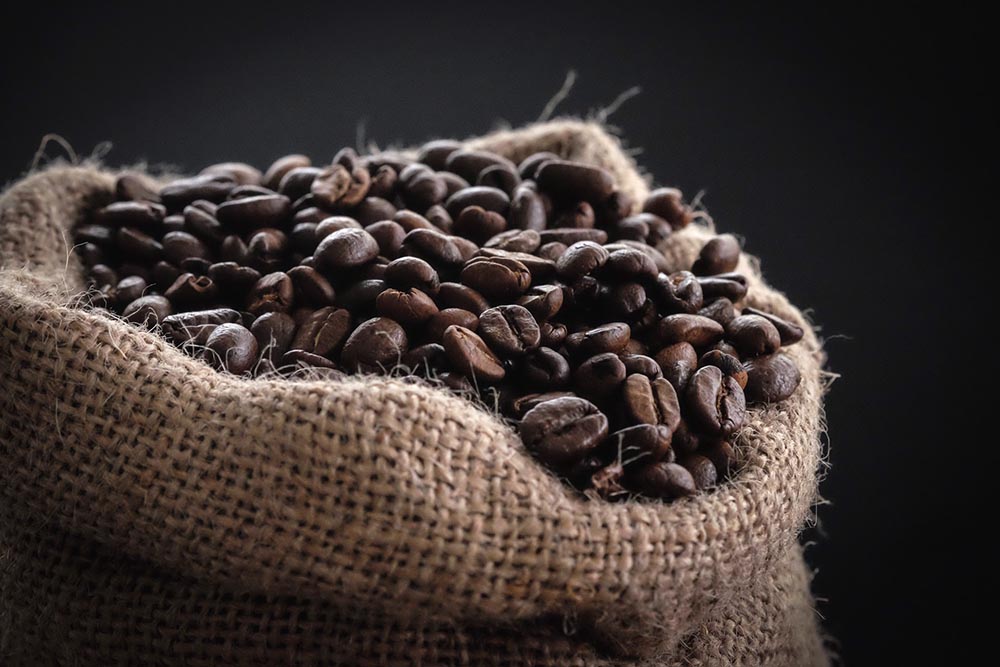
Though coffee has been a staple in American culture for centuries, it still can’t seem to shake common myths that come with its consumption. We have all heard the myths about toxic molds, storage precautions, and pesticides. But which ones are true? And what are the best ways to store coffee? Which conditions can cause it to perish more quickly?
We’ve done a bit of research to nail down some of the most common myths about coffee storage and in this article, we will debunk these myths and discuss the best ways to keep your coffee fresh for as long as possible.

Top 5 Coffee Storage Myths & Misconceptions
1. Canned Coffee Is as Fresh as Freshly Brewed Coffee
When it comes to coffee lovers, everyone wants freshness. In fact, the fresher the better. And in actuality, it comes down to how people perceive freshness. For example, ready-made coffee that comes in a bottle or can be perceived as fresh.
However, it’s not that it’s spoiled, but it’s just not the same as a fresh cup that you’d get from newly ground beans. These products are made with preservatives and anti-caking additives to prevent them from spoiling.
But the age of the beans that they’re made with can vary. So, it’s a bit different than buying fresh beans and roasting them yourself or buying fresh brew from the local cafe.

2. Storing Coffee in The Freezer Ruins Its Flavor
Not necessarily. Cooling coffee slows down its aging process. Specialty coffee should be kept cold, and you can freeze your coffee beans to preserve them. However, you’ll want to take those beans out within three to four months to prevent them from losing their flavor and aroma. So, freezing for too long can, in fact, alter the structure of specialty coffee and lead to individual beans cracking.
But if you plan to consume the coffee pretty quickly, you can simply store them and room temperature within your pantry. On the other hand, if you try to freeze coffee that has already been prepared, it will significantly alter the structure of the beverage, resulting in a lackluster aroma and taste–particularly if it’s made with milk.
3. Ground Coffee Contains an FDA-Approved Percentage of Roaches
A video went viral a few years ago claiming that up to 10% of ground coffee can be made with cockroaches. According to the FDA it’s false, but its origins are based on facts. It’s false that coffee makers are allowed to actually inject coffee bean supplies with ground roaches.
This regulation (similar to the one about rat droppings in peanut butter) is a bit misunderstood. The FDA regulation actually states that 10% of green coffee beans “may” contain insect parts, damage, or some mold.
However, the factor to note here is that these are “green” coffee beans, as in, coffee beans that have not been processed. Remember that before they’re ground green coffee beans are processed and roasted at 400°F and brewed at 200°F before they head out to the marketplace for consumers.

4. The Mold in Coffee Will Make You Sick
While it’s true that coffee does contain mold spores (aka “mycotoxins”), the source of these spores is a bit harder to pin down–though things such as climate, acidity, and growth conditions may play a part. Also, due to their low concentration, they’re usually harmless to most people.
However, if you have a sensitivity to mycotoxins or fungus, you may want to consume coffee with caution, especially if you don’t drink it regularly. Mycotoxins are known for causing health problems such as kidney damage, liver issues, and neurologic impairment.
They also cause the release of histamine, which can be irritating to anyone suffering from digestive issues. But the levels of mold in most coffee beans are rarely high enough to cause such a major physiological disruption to humans.
The best way to avoid potential mold issues with coffee is to always purchase from a reputable brand (be it local or a chain) and to know the expiration date of the beans. You also want to ensure that you store the coffee in a dark and dry place to prevent mold from forming after you purchase it.

5. Coffee Beans Have High Amounts of Pesticide and Fertilizer Residue
False. Oftentimes, unscrupulous coffee brands will make claims that their coffee beans are “free of pesticides” or that other brands are “full of pesticides”. But the truth is that pesticides are allowed to be used in coffee plants, both organic and non-organic.
They’re needed to get rid of common plant pests including coffee leaf miners, mealy bugs, coffee berry borers, and aphids–all of which can quickly ravage a coffee plant. However, the chances that these pesticides make it into your morning cup of joe are pretty low. The steps to process and roast coffee beans significantly reduce the pesticide residue according to regulations by the FDA.


Top 4 Ways To Keep Your Coffee Fresh During Storage
If you’re looking to keep those expensive bags of specialty coffee fresh for the longest time possible, you’ll want to get serious about your storage methods. Here are a few useful storage tips to consider.
1. Use the Freezer for Long-Term Storage Only
Coffee that has been stored openly in the freezer will age quicker and lose its quality. If you aren’t in a hurry or have purchased large quantities of coffee, you can stockpile the beans in smaller bags and freeze those that you don’t need within a week–never use open containers.
Make sure that each bag is sealed tightly with a plastic bag or another airtight container. This will ensure that your coffee isn’t exposed to oxygen. And to maintain constant temperature and humidity, consider storing the sealed bags in a deep freezer instead of a refrigerator.
Also, when you take the coffee out of the fridge, brew it immediately. Otherwise, the temperature will continue to change (as it rises to room temperature), which can lead to additional loss of flavor.
2. Use the Retailer’s Coffee Bag
If the coffee bags were sealed, you can store the coffee in the cupboard or on the countertop–in the same bag. However, after each use, re-seal it tightly. It is a good idea to use your hands to roll the top of the bag, pushing out as much air as possible before closing it.

3. Only Use Containers That Are Airtight and Lightproof
Stale coffee is the absolute worst. And coffee beans (or ground coffee) can lose quality due to excessive light and air exposure, so be sure to keep these elements away from your beans. Today it’s easy to find containers like mason jars, opaque grain containers, as well as plastic bags.
Any one of these containers can be used, but make sure the coffee isn’t stored in direct sunlight. Be careful about setting your coffee on the counter if your kitchen has a nearby window. Cupboard or pantry storage may be a better option.
4. Prevent Potential Pest Contamination
People are not the only ones attracted to the hypnotic smell of coffee beans. Pests such as roaches, flies, and rodents also find their smell pretty tempting. But pests carry diseases and can infest fresh beans, so it’s important to properly store your coffee after you use it.
Be sure to shake off any loose grounds from around your bag seals and always make sure that bags and containers are completely closed before re-shelving them. You’ll also want to wipe the counter down to remove any spilled beans or grounds.

Related Read: Do Coffee Grounds Attract Rats and Mice? What to Know!

Wrapping Things Up
If you search hard enough, you can probably find a myth about every food and beverage that you can consume. But it’s just as important to know which ones are true and which ones have no factual basis.
So, to sum up some of the main points: Yes, coffee does contain mold but the level of contamination is very minimal.
Coffee also contains very little pesticide residue, though every brand’s processing steps will be different. Lastly, the FDA doesn’t allow coffee producers to contaminate their beans with cockroaches, though a certain percentage of insect remnants are commonly found in unprocessed coffee beans.
- https://www.fda.gov/food/laboratory-methods-food/mpm-v-1-beverages-and-beverage-materials
- https://rapidpestsolutions.com/coffee-lovers-beware/
- https://ne-np.facebook.com/foodsciencebabe/videos/cockroaches-in-coffee/370551764730876/
- https://www.webmd.com/lung/mold-mildew
- https://www.healthline.com/nutrition/the-mycotoxins-in-coffee-myth
- https://www.ncausa.org/about-coffee/how-to-store-coffee
- https://www.healthline.com/health/how-long-does-it-take-to-get-sick-from-mold-exposure
Featured Image Credit: pixel2013, Pixabay















